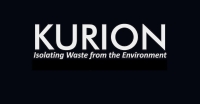Of the seven plastics most widely used for production: PET ♳, HDPE ♴, PVC ♵, LDPE ♶, PP ♷, PS ♸, and Other ♹, only PET and HDPE are widely recycled. When Jeanny Yao and Miranda Wang learned that the rest of discarded plastics are burned (15%) and dumped in landfills (75%), they knew something had to change – and no one was stepping up to do it.
At 18 years old, while part of the recycling club in high school, these friends discovered a soil bacterium that evolved to efficiently break down and eat plastic. Inspired by natures elegant solution, these teenagers studied the bacteria in lab to understand and reverse engineer the chemical mechanisms it developed to simply feed itself. Taking advantage of these processes, and using chemistry to make them more efficient, Jeanny and Miranda have developed a technology to turn low-density and high-density polyethylene into chemical intermediaries that would have otherwise been produced using petroleum.
Their company, Biocellation, is currently building a fully-commercial processing plant that aims to turn 45,500 tons of plastic waste into chemical intermediaries, eliminating the production of 320,000 tons of CO2 emissions by 2023. Though it will not make a dent in the plastic waste crisis, this is exactly the kind of innovation and entrepreneurial spirit we need to start shifting society in a sustainable direction. There is no telling how many entrepreneurs will be inspired by the work conducted by Jeanny and Miranda, and it is that rippling wave of change that we need to enact a cultural shift in the way our society chooses to deal with plastic.





